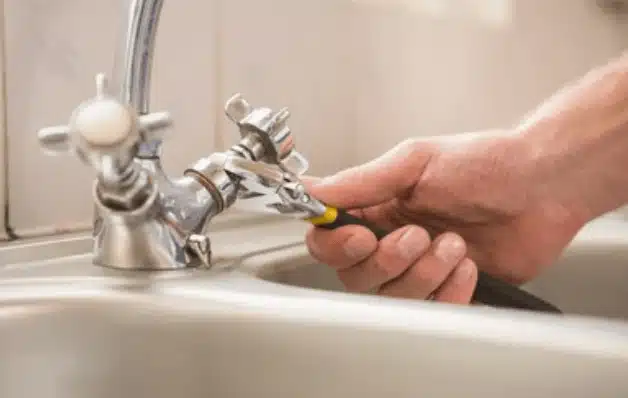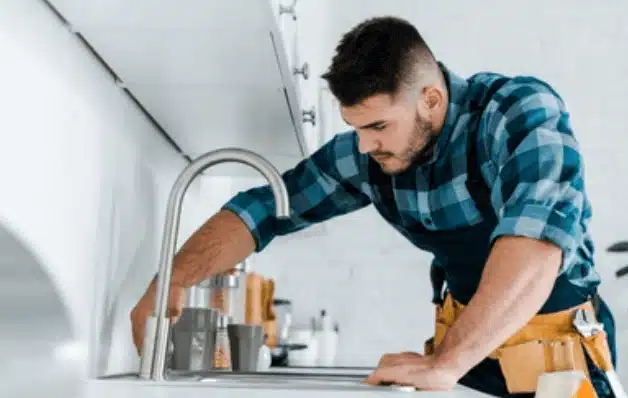Having running water in our homes is essential for our daily activities, from cooking and cleaning to showering and drinking.
However, there are times when we may experience a sudden lack of water and no water in my house, causing inconvenience and frustration.
In this article, we will explore the common causes of no water in my house.
We also provide troubleshooting steps to restore the water flow.
There are several possible reasons of the problem you may have “no water in my house”.
It could be due to common causes such as a sudden water loss or issues with the water supply.
It is important to inspect the house’s water main to determine the source of the problem.
One common cause of sudden water loss is a frozen pipe.
During colder months, pipes may freeze, causing the water flow to stop.
Another possible cause is a water leak, which can lead to a decrease in water pressure or even a complete loss of water in the house.
If you have no water in your home, it is essential to check if there are any issues with the water supply.
Problems such as a malfunctioning water pump or a fault in the main water supply can cause a disruption in the water flow.
To the cause of no water in your house, it is important to inspect the water main.
Check for any visible signs of damage or blockage in the water supply lines.
Additionally, ensure that the water valve is fully open to allow the water to run smoothly.
When you have no water in my house, there are several steps you can take to troubleshoot the issue before calling a professional.
There are some of the initial actions you can take to identify the problem as:
If you’re not getting any water in your house, start by checking the water pressure.
Low water pressure could indicate a problem with the water supply or a potential leak in the system.
You can use a pressure gauge to measure the water pressure and compare it with the recommended levels.
If there is no water in your house, it is crucial to inspect the premises for any signs of a water leak.
Look for water stains, damp walls, or puddles around pipes or fixtures.
These signs may indicate a hidden water leak that could be affecting the water flow in your home.
To further troubleshoot the issue of no water in your house, test the water flow in various faucets.
Check all the taps in your house, including both hot and cold water.
If there is no water or low water flow in multiple faucets, it indicates a broader problem within the water system.
If you have determined that the problem lies within your water system, there are a few steps you can take to troubleshoot the water flow issues.
There are some of the actions you can undertake including:
If there is no water in your house, it is essential to check if the water pump is functioning correctly.
Ensure that the pump is receiving power and inspect it for any visible signs of damage or malfunction.
A faulty water pump can significantly impact the water flow in your home.
In case of no water in your house, it is crucial to investigate any issues with the main water supply.
Contact your water company to check if there are any known problems in your area.
Additionally, inspect the water meter and the connections to ensure there are no leaks or blockages.
If the water flow is disrupted only in certain parts of your house, it could be a problem related to the water heater.
Check the water heater for any malfunctions or leaks that could be affecting the hot water supply.
Replacing a faulty water heater can restore the water flow to your home.
Experiencing a sudden stop in the water flow can be alarming, but there are steps you can take to address the issue.
Contacting the water company for:
These are some of the actions you can take in such a situation.
If you have no water in your house, it is advisable to contact your water company for assistance.
They can provide information on any ongoing water supply issues in your area or send a technician to assess and resolve the problem.
Be sure to have your account details and address ready when contacting them.
If your house relies on a well for water supply and there is a sudden stop in the water flow, check the well pump for any problems.
Ensure that the pump is properly connected and receiving power.
It may also be beneficial to check the well water level to rule out any issues with the water source.
A malfunctioning pressure tank can also result in a sudden loss of water in your house. Inspect the pressure tank for any faults or leaks.
Check the pressure controls and the pressure switch to ensure they are working correctly.
If necessary, consult a professional to repair or replace the pressure tank.
Our team provide water leak detection services

If you have identified the cause of no water in your house, you can take the necessary steps to restore the water flow.
This may involve various actions, such as:
If your house is experiencing a lack of water, follow these steps to restore the water flow:
If the lack of water in your house is due to a municipal water issue, there are a few steps you can take to restore the water supply:
Check our plumbing inspection services houston
To prevent sudden instances of no water in my house in the future, there are a few essential tips that can be followed.
Firstly, regularly inspect and maintain the plumbing system to ensure there are no leaks or blockages that can disrupt the water supply.
Secondly, installing a backup water storage system, such as a water tank or reservoir, can serve as a contingency plan in case of any water shortages.
Thirdly, it is crucial to stay updated on any maintenance or repair works being carried out in the local water supply network to avoid any surprises.
Additionally, conserving water by fixing leaky faucets, using efficient appliances, and practicing water-saving habits.
Lastly, being prepared with a stockpile of bottled water or portable water filters can serve as an emergency backup in case of prolonged water disruptions.
Overall, these simple steps can ensure a continuous supply of water in the house.
If you have exhausted all possible troubleshooting steps and are still unable to restore the water flow in your house, it is best to call a professional plumber.
A trained plumber will have the expertise and tools to identify and resolve complex water system issues efficiently.
| M | T | W | T | F | S | S |
|---|---|---|---|---|---|---|
| 1 | 2 | 3 | 4 | 5 | ||
| 6 | 7 | 8 | 9 | 10 | 11 | 12 |
| 13 | 14 | 15 | 16 | 17 | 18 | 19 |
| 20 | 21 | 22 | 23 | 24 | 25 | 26 |
| 27 | 28 | 29 | 30 | 31 | ||

